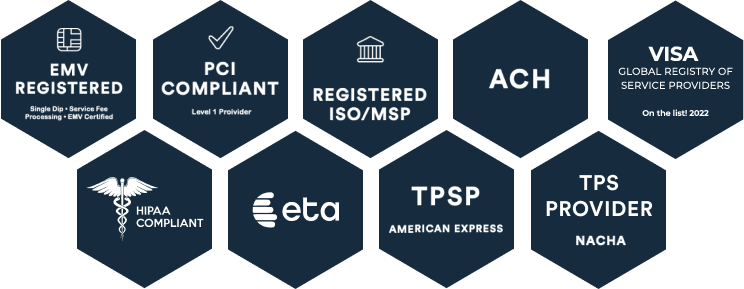The importance of patient financial responsibility in healthcare—and its significance to hospital revenue models—is unlikely to decrease, and may become even greater. Read more about the true cost of patient payment collections. It’s vital for healthcare facilities to implement more successful methods of collecting on patient self-pay accounts. Consider these four best practices for improving patient collections.
Collect at or before the time of service when possible.
Research shows that providers are much more likely to collect on patient accounts at or before the time of service than after the visit is complete. Providers say they only expect to collect 50 to 70 percent of a patient’s balance after a visit, according to a McKinsey study. By waiting to collect after the service, the amount eventually collected is likely to be less than a full payment, leading to bad debt write-offs and increased costs for collection efforts.
To effectively collect at the time of service, provider staff must have quick and easy visibility of a patient’s account and any payments that are due. Read more why greater visibility of patient payment responsibility matters. When a patient has his or her credit card out to make a co-pay payment, it’s often the best opportunity to collect outstanding balances. Overall, staff (front counter and over the phone payment encounters) need to shift the focus and conversation from “Would you like to make a payment today?” to, “How would you like to make a payment today?” It is about setting the correct expectation that a payment is required.
Communicate openly and clearly about the patient’s responsibility.
The best way to prepare patients to pay their portion of their medical bills is to inform them upfront about the amount they will owe. It’s not always possible to educate patients about the financial side of their care in advance, such as in an emergency situation. But whenever possible, financial staff should talk to a patient before an admission, visit, or procedure. That conversation should include explaining how much the patient has paid toward his or her deductible, as well as how much the resulting balance will be.
When patients are properly informed about what’s covered and their estimated balance, the time to resolve patient self-pay accounts is significantly reduced. It can be effective to ask for a down payment or set up a payment plan before the procedure occurs, which can help start the patient on the road to account resolution.
Show respect and empathy for the patient.
In a traditional collections environment, a customer’s improper budgeting or overspending may be to blame for their past due account. But in the healthcare environment, the patient has often experienced a catastrophic situation or an unexpected health issue. That means, in most cases, the medical bill was not the result of the patient’s poor planning or decision making.
To successfully resolve patient self-pay accounts, healthcare facility staff need to be aware of this difference. They should treat patients with outstanding medical bills differently than they would treat a person who is late paying their cell phone bill. Staffers must understand that few people can write checks for $2,000 or even $500 to pay their balances in full. To resolve the accounts, healthcare facilities and staffers must be willing to work with patients and provide more time and options rather than creating more stress and significant dissatisfaction for them.
It may be important to provide customer service trainingto help staffers handle objections appropriately, interact empathetically with patients and learn new procedures for resolving patient accounts. Patients will be more likely to resolve their accounts when they experience positive interactions with hospital staff.
Make it easy for patients to resolve their outstanding balances.
As patients have become more responsible for their own medical bills, healthcare providers must become more consumer-friendly with payment options. Most consumers today are accustomed to making purchases online with the click of a button or checking out at the grocery store with contactless payment options. They may be more likely to pay their medical bills, and more promptly, when they’re able to pay in the ways that are most convenient to them. The more options a patient has for paying his or her medical bill, the more likely he or she is to pay it, according to Medical Economics.
That’s why healthcare providers should provide a variety of convenient payment choices that make it easy for patients to pay their bills. That may include the ability to pay at home through an online portal or at the front desk at the point of service.
Patients also appreciate consistency across all healthcare payment channels, including their physician’s office, their pharmacy, and their hospital. For instance, with a truly integrated healthcare payments system, patients can pay their bill for a recent medical procedure as well as the medicine their physician prescribed when they stop to pick up the prescription in the pharmacy. A patient could also ask staff at their physician’s office to explain how much they owe from a recent hospital stay—and pay the bill on the spot.
At the end of the day, it’s all about enhancing the consumer payment experience while reducing organizational barriers to payments collection.






